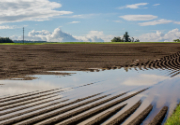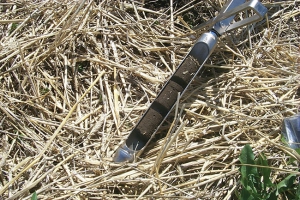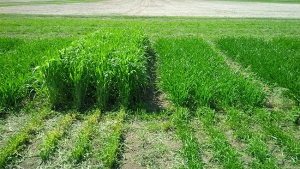| |
| |
 |
 |
| |
 |
|
MMMM d, yyyy |
|
| |
Saskatchewan’s Agriculture Development Fund (ADF) has announced nearly $7.7 million in funding for crop-related research projects. Funded projects include research on improving plant breeding technology and optimizing loss-sensing technology on farm equipment.
» Read more...
The 2017 Field Crop Disease Summit Sweepstakes grand prize winner has been chosen! Congratulations to Alissa Snider – lucky winner of two free passes to the Summit, taking place on Feb. 21 and 22 in Saskatoon, plus an overnight stay at the Holiday Inn Saskatoon Downtown.
» Read more...
An environmentally sustainable alternative to chemicals and pesticides that involves a spray of nano-sized degradable clay makes plants “think” they are being attacked by a disease or pest insect, and the plant responds by protecting itself.
» Read more...
|
| |
 |
 |
| |
|
| |

Get a more complete burn down that lets you seed almost anything. Tank mix Aim with your choice of products, so you can use what you’re used to with superior results and no fear of cropping restrictions.
>> Learn More |
| |
|
| |
 Enhanced efficiency fertilizers (EEF) are forms of fertilizer, including nitrogen, designed to reduce nutrient losses to the environment. In doing so they make more nutrients available to crops.
» Click here to learn about the 3 types of EEFs.
Enhanced efficiency fertilizers (EEF) are forms of fertilizer, including nitrogen, designed to reduce nutrient losses to the environment. In doing so they make more nutrients available to crops.
» Click here to learn about the 3 types of EEFs. |
|
 Increasingly volatile weather conditions are changing how farmers handle their crop nutrients, including nitrogen (N). As the weather patterns change, some farmers are losing more nitrogen from their fertilizers to the surrounding environment.
» Click to learn how the controlled release of ESN Smart Nitrogen can reduce N loss.
Increasingly volatile weather conditions are changing how farmers handle their crop nutrients, including nitrogen (N). As the weather patterns change, some farmers are losing more nitrogen from their fertilizers to the surrounding environment.
» Click to learn how the controlled release of ESN Smart Nitrogen can reduce N loss. |
| |
|
| |
 Soil microbes provide billions and billions of teeny helping hands to your crops. Those helping hands are key to sustainable, profitable crop production.
» Read more...
Soil microbes provide billions and billions of teeny helping hands to your crops. Those helping hands are key to sustainable, profitable crop production.
» Read more... |
|
 Is it practical for farmers on the southern Canadian Prairies to harvest two crops on the same field in the same growing season? It’s an intriguing idea that Jamie Larsen thinks just might work – especially in warmer areas that have irrigation and if one of the two crops is a winter cereal that can be taken off for silage.
» Read more...
Is it practical for farmers on the southern Canadian Prairies to harvest two crops on the same field in the same growing season? It’s an intriguing idea that Jamie Larsen thinks just might work – especially in warmer areas that have irrigation and if one of the two crops is a winter cereal that can be taken off for silage.
» Read more... |
| |
 |
 |
| |
|
| |
|
|
| |
| |











